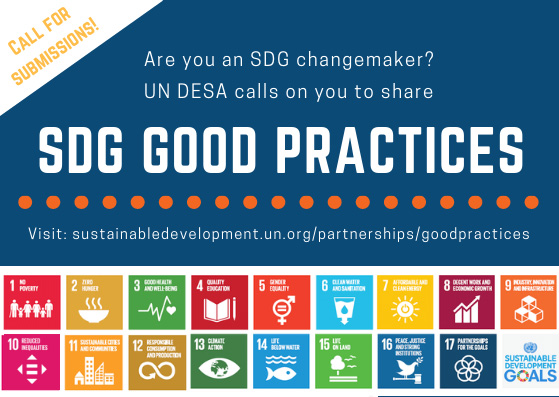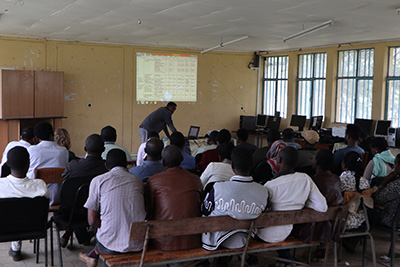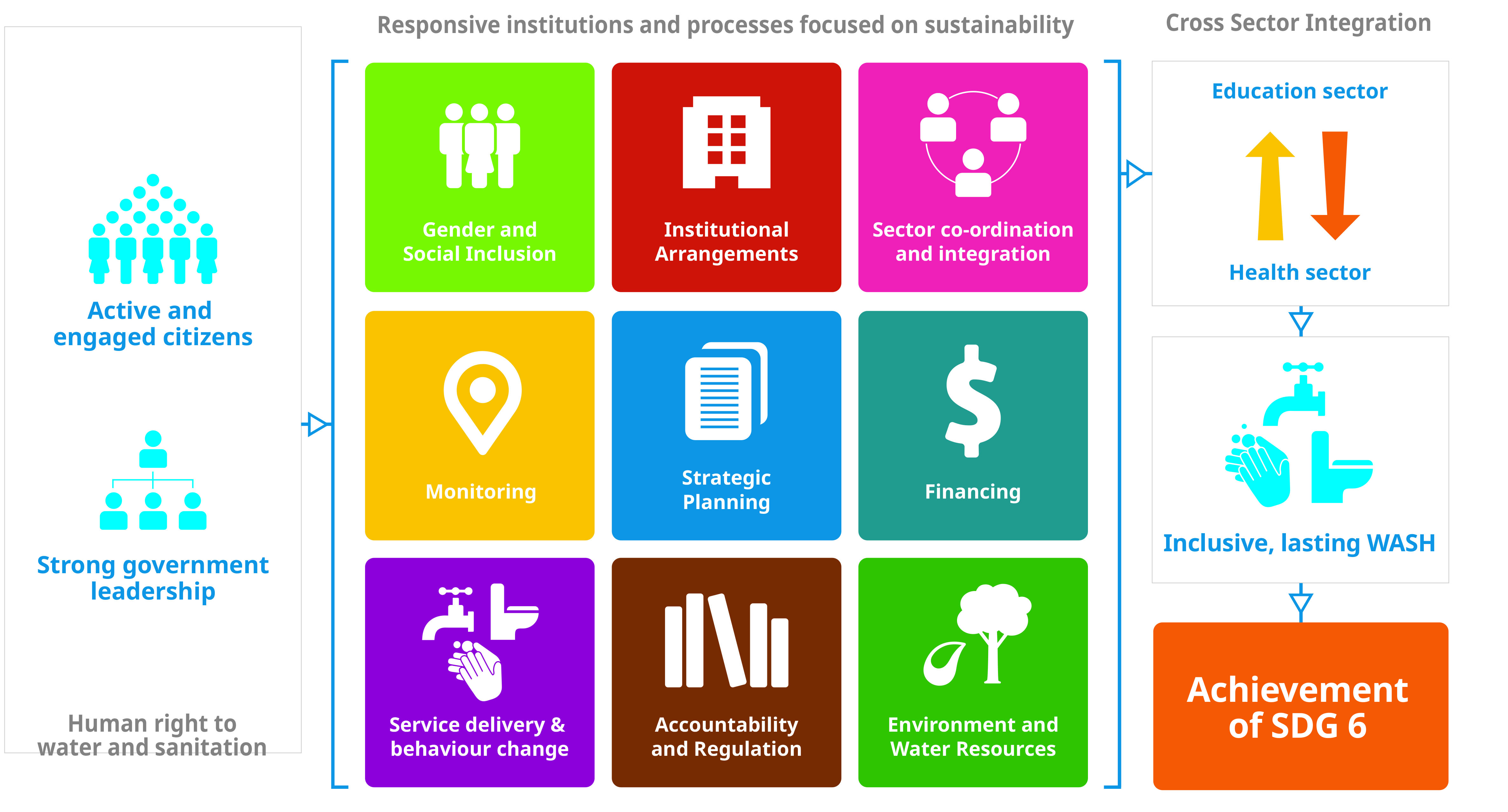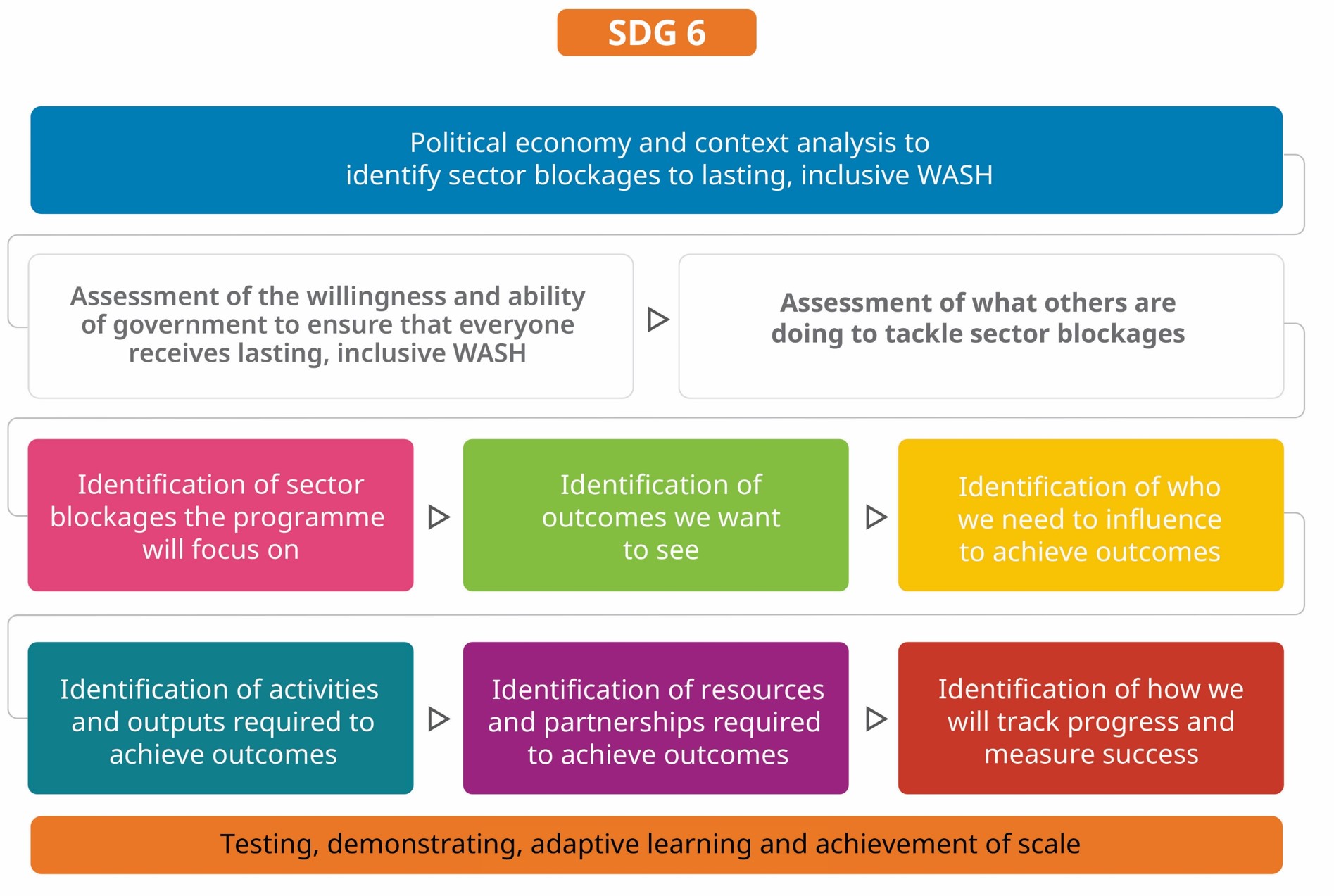Accelerating progress towards SDG 6: a system strengthening approach for water, sanitation and hygiene that leaves no one behind
Description
WASH system strengthening is about strengthening the environment into which WASH services and behaviours are introduced to ensure they continue to deliver benefits to everyone in society long after implementation. WASH system strengthening has evolved from an understanding that service delivery alone, without support to strengthen citizens’ voice, government leadership and accountability, and public institutions, will fail to reach everyone in society with sustainable, high-quality WASH access. System strengthening requires detailed context analyses to identify areas of the system requiring targeted support. It takes time, requiring close collaboration with government (at multiple levels), service providers, civil society and communities.
The overall objective of system strengthening is to ensure that WASH access (both services and behaviours) is universal, inclusive and sustained long after an intervention has finished. By identifying and tackling systemic blockages to WASH inclusion and sustainability (in communities, schools and healthcare facilities), the system strengthening approach aims to accelerate progress towards the achievement of SDG 6 (notably targets: 6.1, 6.2, 6.A and 6.B), with knock-on effects for SDGs 3, 4, 5, 6 and 16. Underpinned by the human rights to water and sanitation, system strengthening aims to empower citizens to demand their rights, build strong and accountable governments (at all levels), strengthen public institutional processes (such as: strategic planning, financing, monitoring, coordination, regulation and policy) and demonstrate sustainable models for WASH delivery for government scale-up. It is this holistic approach which sets system strengthening apart from more traditional, service delivery based approaches. Cross-sector collaboration is central to system strengthening as is the achievement of transformative change that leaves no one behind. Aligning with and embedding into government processes and structures is critical to building government capacity and leadership for the ongoing delivery and sustainability of WASH. However, working to government timescales can sometimes delay progress. System strengthening aims to change the mind-sets and behaviours of communities and governments alike. For example, shifting government mind-set to allocate budget for the ongoing costs required to sustain WASH access, rather than just the initial capital costs for new infrastructure installation. This behaviour change has been initiated by the completion life cycle costing assessments (LCCA) for water and sanitation services. These participatory assessments have helped to highlight to district governments the full costs required to sustain WASH access long into the future. These costs have been included into district development plans and submitted to higher-government for budget approval. The LCCA results have also been shared with higher levels of government to influence scale-up of the costing approach into other districts. A lack of data is also a challenge to systems strengthening and the achievement of universal WASH access. Data about current WASH access and the level of service currently received by communities in the district is required for informed government decision-making. Working with government to collect such data has strengthened government understanding of service level data and ability to collect and use the data in future decision-making. Increased availability and use of WASH data helps ensure WASH access is sustained and that investment is targeted to communities so far left behind. Working to government timeframes and changing behaviours takes time: system strengthening therefore requires flexible funding, targeted advocacy and adaptive programme management.
WaterAid’s system strengthening approach starts with a participatory context analysis and programme design process. These processes have been completed with key stakeholders (including government, private operators, civil society organisations and communities) to ensure systemic blockages to WASH inclusion and sustainability are identified and incorporated into the intervention. The involvement of these stakeholders, particularly government, in the assessment and design phase has helped to build support and leadership for the intervention in each target district. Stakeholder participation, and the completion of stakeholder mapping during the design phase has also helped to reduce the risk of duplicating efforts – for example, there are many agencies already working in Kampala to strengthen different parts of the WASH system. Depending on the context, WaterAid considers the district or province as the administrative point of entry for a system strengthening approach. Under the decentralisation process, it is often at these lower levels that government has the responsibility and mandate for the sustainable delivery of WASH services and behaviours. At these lower levels of government, WaterAid is playing a facilitating and capacity building role to help strengthen citizen’s voice, government leadership and institutional processes. Where progress at the district level has been limited (often the result of weak decentralisation of authority and finance), the system strengthening approach promotes engagement at the national level to seek sectoral and policy reform. Efforts at the national level are being bolstered by engagements at regional and global levels to increase downward pressure on national-level reform and accountability. It is through this multi-pronged approach that system strengthening aims to achieve sustainable universal access to WASH. A results framework with quantitative and qualitative indicators is being used to capture evidence of change in the system. An adaptive management approach encourages regular reflection on progress made, challenges and changes in the context. This management approach is facilitating course-correction to ensure the intervention remains effective and relevant to the changing context. Regular reflection, documentation, and dissemination of lessons learnt and best practice in applying system strengthening has been embedded within the approach. Lessons, best practice and evidence of change are being used to influence policy and practice of government (at multiple levels), WASH practitioners and donors, to bring about transformative change.
The impact of system strengthening is context-specific and takes time to be observed. System strengthening requires the supporting agency to work directly with government and align to government processes which can often slow progress. Sufficient time should be dedicated at the start of the intervention to build government buy-in and leadership. The context-specific nature of system strengthening requires an adaptive management approach and flexible donor funding. Flexible funding allows for continuous course correction, ensuring the intervention remains relevant and appropriate to the context. A system strengthening approach should strengthen existing government structures and processes to avoid the creation of parallel processes (as set out in the Sanitation and Water for All Collaborative Behaviours). Key stakeholders should be involved from the beginning, starting with the participatory context analysis and programme design process. The context analysis should be continuously reviewed to inform further programme refinement. Collaboration with non-WASH sector actors is critical to a system strengthening approach. This helps to embed WASH into other sectors (notably the health and education sectors) for sustained impact, the achievement of numerous SDGs and transformational change.
SDGS & Targets
Deliverables & Timeline
Resources mobilized
Partnership Progress
| Name | Description |
|---|
Feedback
Action Network


Timeline
Entity
Region
- Asia and Pacific
Geographical coverage
Photos



Website/More information
Countries

Contact Information
Hannah Crichton-Smith, Sustainable WASH Officer
